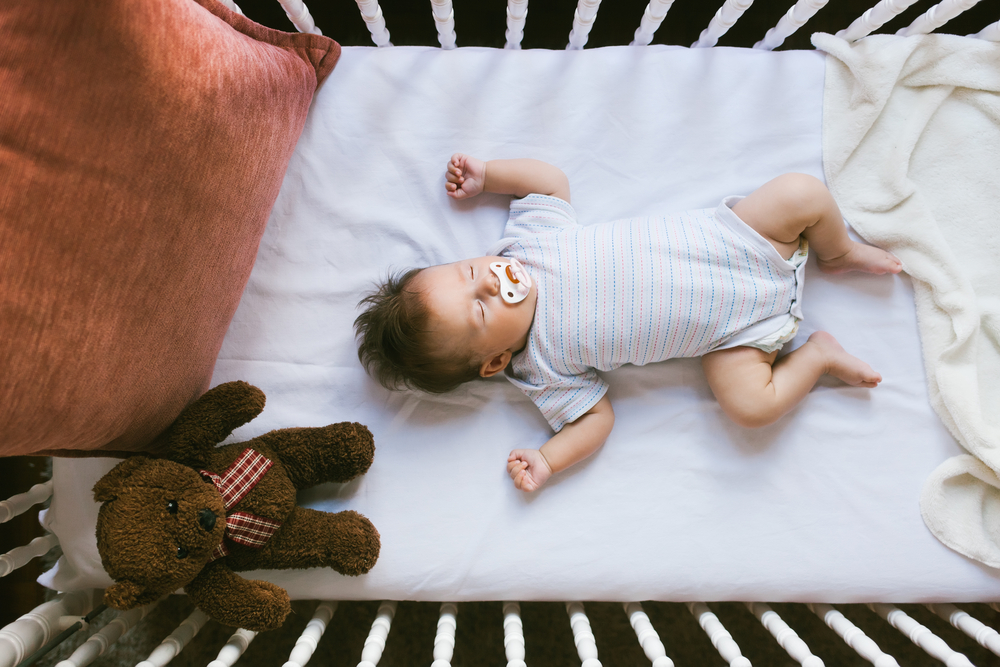Mattresses Shed Harmful Chemicals, Endangering Children as They Sleep
Posted on Categories Discover Magazine

A child’s bedroom should be a safe haven where they can get enough sleep to develop properly, but many bedrooms contain a hidden danger that is sure to make parents weary. A recent pair of studies has revealed the prevalence of harmful chemicals that are slipping into bedrooms through the mattresses children sleep on.
The studies show that babies and young children are at risk of breathing in and absorbing chemicals as they sleep. These chemicals — including plasticizers called phthalates and flame retardants — have a chance of inducing neurological and reproductive problems, asthma, hormone disruption, and cancer. Researchers are now calling for more rigorous testing to ensure mattresses are rid of chemicals that could pose a major developmental threat to children.
Chemicals in Bedrooms
The two studies aimed to uncover the extent of SVOCs (semivolatile organic compounds) in children’s bedrooms, with their findings published in Environmental Science & Technology and Environmental Science & Technology Letters.
SVOCs are especially common around what the researchers call a child’s sleeping microenvironment (SME), which consists of bedding materials, pillows, toys, and the surrounding air. Since the chemicals are often not chemically bonded to materials like mattresses, they end up permeating the air, dust, clothing, and skin.
The first study measured SVOC concentrations in 25 bedrooms of children aged 6 months to 4 years; the results showed “concerning levels of more than two dozen phthalates, flame retardants, and UV-filters in bedroom air,” according to a statement. Chemical levels, the researchers noticed, were highest right around the beds.
A second study followed up by examining 16 newly purchased children’s mattresses. The researchers observed significant SVOC emissions from the foam and covers of the mattresses; they also conducted simulations to confirm that a child’s body temperature and weight cause higher emissions to be released from the mattresses.
Read More: How the ‘First 1,000 Days’ Could Shape Your Baby’s Future
The Dangers of SVOCs for Children
Research suggests children may breathe and absorb plasticizers called phthalates, flame retardants, and other harmful chemicals from their mattresses while they sleep.
(Image Credit: University of Toronto)
Young children are particularly vulnerable to SVOCs due to having a breathing rate that is 10 times higher than adults, more than three times the skin surface area relative to their body weight compared to adults, and more hand-to-mouth contact.
SVOCs pose a series of health risks for children. Phthalates and flame retardants are hormone disruptors, and some are even linked to childhood asthma and cancer. Exposure to these chemicals can also give rise to learning disorders, reduced IQ scores, behavioral problems, and impaired memory.
The researchers were perplexed by the frequency of flame retardants, which they say are not necessary to pass U.S. or Canadian mattress flammability standards. According to the researchers, these flame retardants “also have no proven fire-safety benefit as used in mattresses.”
How to Keep Children’s Bedrooms Safe
The researchers are now urging manufacturers to conduct careful testing and cease the implementation of harmful SVOCs in mattresses. They say that there should be stronger restrictions in place for plasticizers and flame retardants, especially in Canada — where the mattresses measured in the studies were purchased — and the rest of North America.
“This is a wake-up call for manufacturers and policymakers to ensure our children’s beds are safe and support healthy brain development,” said senior author Miriam Diamond, an environmental chemist at the University of Toronto, in a press release.
Concerned parents can manage their children’s exposure to the chemicals in a number of ways. The researchers suggest reducing the amount of bedroom materials that may harbor SVOCs, including pillows, blankets, and toys. Washing beds and covers can also provide a protective barrier to reduce exposure. The choice of color in bedding also affects exposure, as some fabrics contain UV filters and other additives to maintain a strong color. Undyed or neutral color fabrics, therefore, make for the safest option.
This article is not offering medical advice and should be used for informational purposes only.
Read More: Stress May Be Causing Early Puberty
Article Sources
Our writers at Discovermagazine.com use peer-reviewed studies and high-quality sources for our articles, and our editors review for scientific accuracy and editorial standards. Review the sources used below for this article:
Jack Knudson is an assistant editor at Discover with a strong interest in environmental science and history. Before joining Discover in 2023, he studied journalism at the Scripps College of Communication at Ohio University and previously interned at Recycling Today magazine.